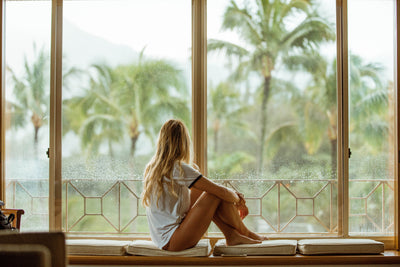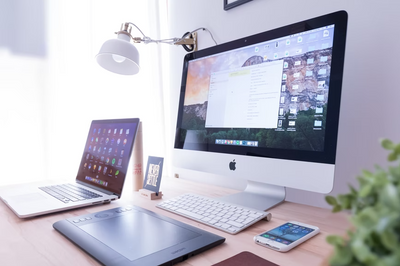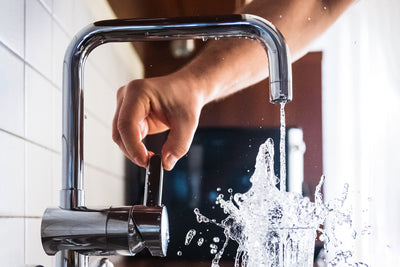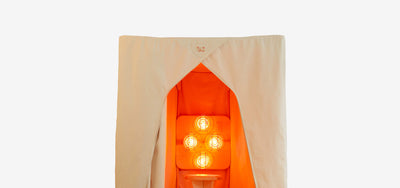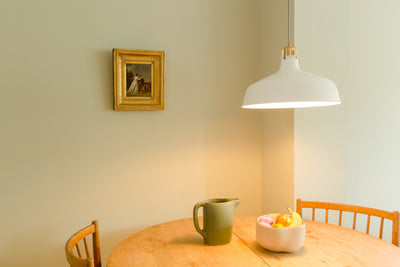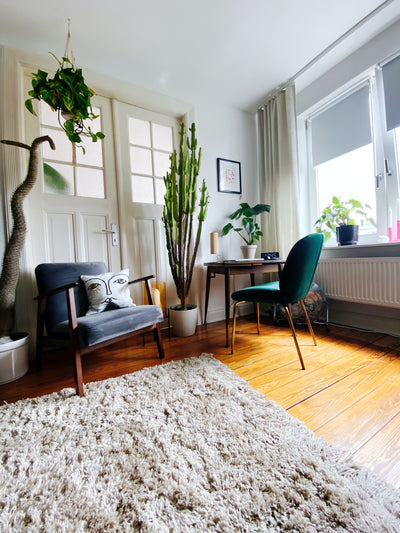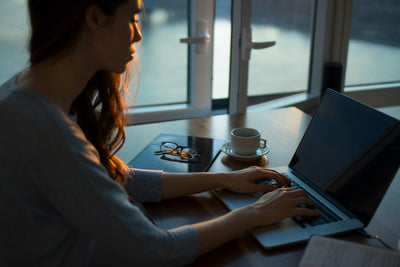The Wellbeing Interior Trends to Know

“One positive thing to come out of the past year is a change in attitude towards wellbeing at home,” says Conscious Spaces founder Tara Williams. “There’s been an awakening. People have discovered first-hand just how much your indoor environment can impact your health.”
“For too long, we’ve ignored what our buildings are made of, how natural they are, how much light they let in,” comments Tara. “But months stuck at home have brought these topics to the surface, and we’re starting to realise just how much our indoor surroundings contribute to our health and happiness. They’re as vital as nutrition and exercise.”
A 2020 survey by the Royal Institute of British Architects echoed this, with 70% of respondents saying that the design of their home has affected their wellbeing during the pandemic.
It’s a theme that Tara was recently asked to reflect on as part of a panel discussion on interior and architecture trends – including the ‘Home as Sanctuary’.
“At Conscious Spaces, it's always been our aim to help people to optimise their space," she says. "Taking part in the discussion got me thinking, what are the key new ideas to emerge out of lockdown for interiors that boost wellbeing?”
Saluting the renewal that comes with spring, read on to discover Tara’s predictions for the top wellbeing interior trends for the year ahead to give your space a welcome refresh.
Flexible rooms and multifunctional spaces

“Because of lockdown, people are now expecting their homes to fulfil multiple functions. They’ve become not only places to retreat and relax, but schools, offices and gyms. Almost every room now has more than one use.
“I think 2021 will see a shift away from open-plan living and a move towards more flexible rooms that allow each family member their own space. That could be as simple as introducing a new bookcase or shelving unit to create a divide. Movable partitions, internal walls with windows and glass doors can give more privacy and peace while maintaining a sense of connection and flow.
“Keeping that idea of flow at the forefront is vital for wellbeing. Because when you make a space more modular, you risk it feeling sterile. So, if you’re going to separate things, keep balance in mind. Incorporate natural elements, lots of light, and make sure there’s room for energy to move freely.
“With space often in short supply, the things we put inside our homes will need to do more but take up less room. That could mean clever storage solutions or versatile furniture that can adapt between work and rest and meet different needs throughout the day.”
Incorporating pieces with purpose or meaning

“I’m a big believer in not needing hundreds of things to feel fulfilled, and I think that’s something that the last year has reinforced.
“Because of this, I think we’ll see more meaningful interiors, with people being more selective about what they have in their space: only including the objects that bring them joy.
“For me, the things in my home either need to hold meaning – or have a health-giving purpose. That might be my air-filtering house plants, my favourite hand-woven rug or the Tibetan chimes that live in my office. Then there are things like my natural beeswax candles made by a local lady, or wooden sculptures from past holidays. With travel potentially off the cards for a while yet, pieces that spark holiday memories take on a new significance. I also treasure my books. I think books are such beautiful objects because they look lovely, but they also remind you of what they taught you – how they expanded your thinking.
“Filtering through your belongings can be a very calming process. I find it helpful to take everything out of a room and then bring things back in one by one. Only keep them if they have a purpose or meaning – or if they bring you happiness.”
Good tech hygiene

“You’ve probably heard of sleep hygiene, but we think the next decade is going to be all about tech hygiene.
“Yes, technology can enable us to do amazing things, but there’s also a saturation point. Invasive smart tech is encroaching on people’s homes. The idea of turning on your heating remotely might sound novel, but in reality, do you really need to be able to control the living room lights from your phone or keep a digital inventory of the food in your fridge through an app?
“From the blue light that shines from screens to the electromagnetic frequencies (EMFs) emitted by our wireless devices, an overload of tech can bring unwanted health effects. With the development of smart cities and the smart grid – and the way the lockdowns have significantly upped our screen time – we need to be more aware of this health-impact than ever.
“To address this, I think a more mindful approach to tech in the home will become more widespread. It’s about finding a balance and introducing good tech hygiene practices, like keeping tech out of the bedroom or turning your Wi-Fi router off overnight. There are EMF shielding products, like Y-Shield Paint and canopies for your bed, and then there are protective devices that mitigate the effects of EMFs, like Waveguard’s Qi-Shield.
"More and more people want low or no-tech spaces to make their home as peaceful as possible and create a sanctuary space.”
Biophilic design

“We’ve noticed a continued increase in interest in biophilic design over the last year.
“Biophilia is a sense of connection with the natural world. So biophilic spaces are spaces that feel in touch with nature, deepening our bond with our surroundings and helping to calm and destress.
“Biophilic design can mean using natural materials – wood, linen, rattan, clay plaster – or an abundance of house plants. A biophilic space will usually make natural light and views onto the outdoors a focal point. You can incorporate biophilia into your home in a more abstract way, too, by introducing organic shapes with your furniture and décor.
“I love what Oliver Heath is doing with his design school. He has some great insights into the principles of biophilic design and practical ideas for how to implement it.”
Natural lighting that supports circadian rhythm

“With people stuck behind their desk or home-schooling at the kitchen table, it’s often difficult to get outside during the day – particularly in winter. But daylight is so crucial for good health. It supports your circadian rhythm, which regulates your sleep – and so has an impact on mood, energy, focus, skin, gut health – everything. So, I think maximising natural light within our indoor spaces will be a key focus going forwards.
“Lighting choices are important too. Bright spotlights can be intense and stressful. Cold, blue-toned lighting – like that given off by the light rings that more and more people are using to illuminate their Zoom calls – might create a more flattering on-screen look, but it can be damaging to your health. Blue light tricks your brain into thinking it’s daytime and makes it harder to get to sleep. So you need to find a balance with non-flicker red light – especially after dusk onwards. People would be better off using lamps that give off a warm, relaxing glow, like a red-light therapy lamp or a salt lamp.”
Nature-inspired shades and textures

“Along with the growing need to bring the outdoors in, 2021 will see earthy, neutral tones become increasingly popular in interiors.
“I like to think of these more muted shades as ‘kind’ colours. They’re the sort of colours you find in nature – pebble grey, shell pink, organic browns and soft whites – and can help make a space feel more serene.
“But ultimately, you need to choose colours that appeal to you and work with the purpose and use of your room. For example, something calming for the bedroom. For the office, you could use something that helps with focus, like a blue hue, or to enhance creativity, maybe a shade of orange. Different rooms need to bring a different energy.”
Mindful design choices and materials

“After being forced to spend so many hours with your belongings, you begin to notice their quality. Pieces that are kinder to the environment are often also better for your health. I think people forget that some paints, vinyl flooring and furnishings give off harmful chemicals, which you inhale.
“I think people will look to replace plastic and chemically-treated materials with more sustainable options. Things like cork flooring, FSC certified wood furniture, eco paint, vintage pieces or natural textiles produced by ethical makers.
“Cost is a factor here, but making more mindful choices about what’s inside your home can make a big difference for both the planet and your wellbeing.”
Make Your Home A Conscious Space
Discover how we can help you to curate a space that restores your connection to nature and boosts your everyday wellbeing through expert consultancy services and science-backed products. Click here to browse the Conscious Spaces Collections.








